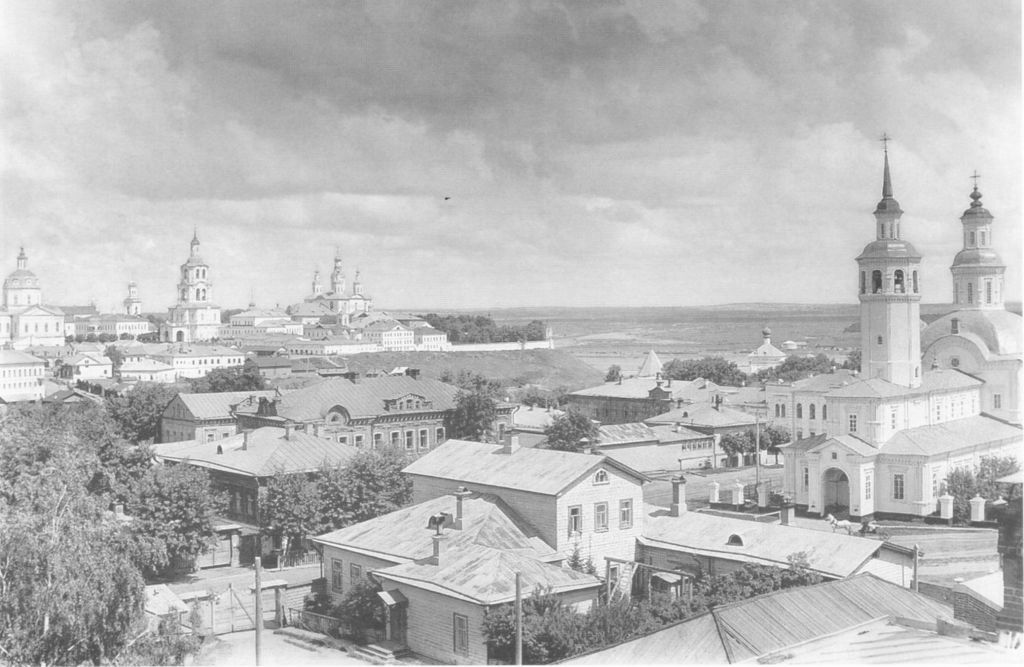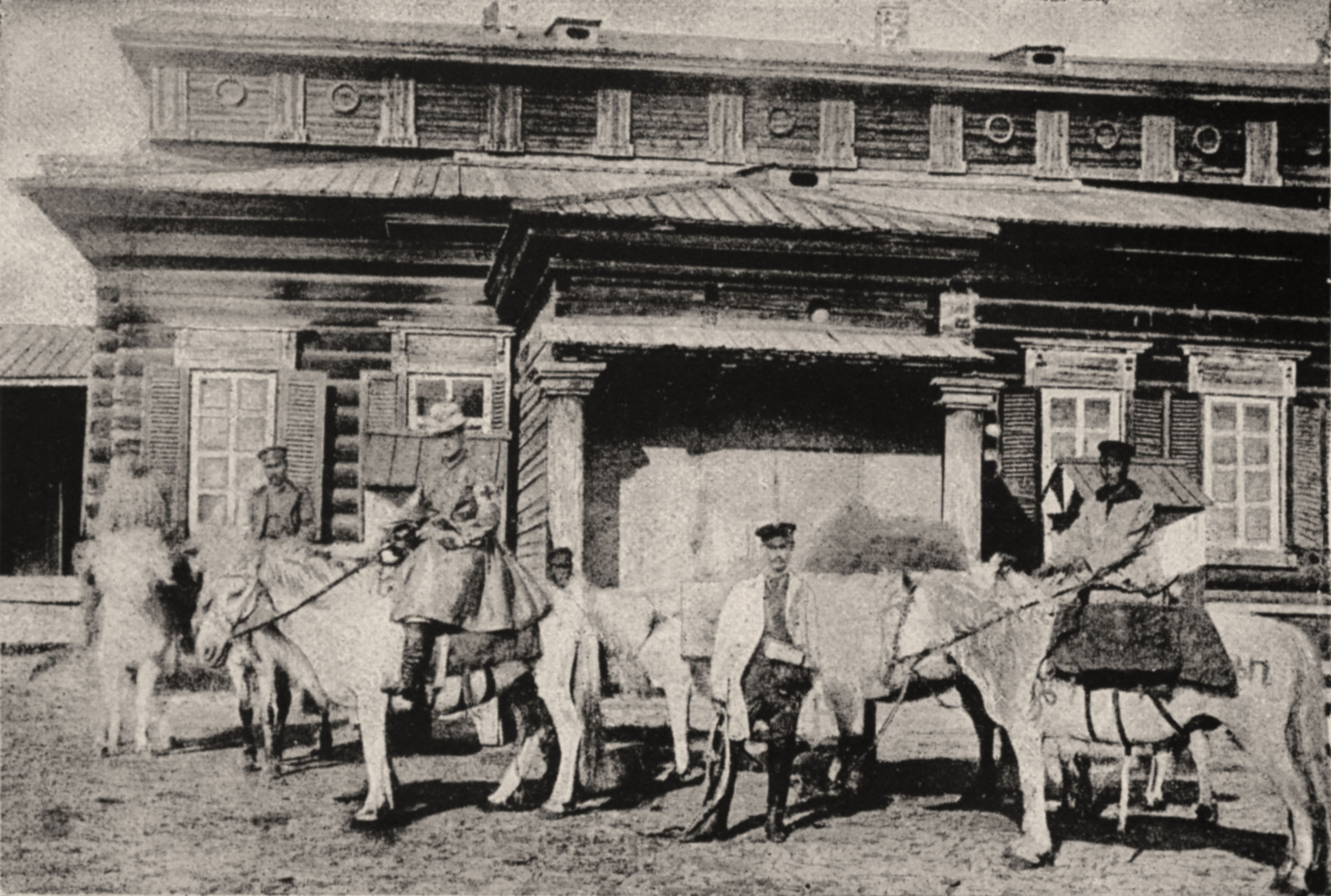|
Ivan Yevreinov
Ivan Mikhaylovich Yevreinov (russian: Ива́н Миха́йлович Евре́инов) (1694 – 3 February Old Style, O.S. 1724) was a Russian geodesist and explorer. Ivan Yevreinov was born in Poland, then brought to Russia and baptized into Eastern Orthodox Church, Orthodox Christianity. Ivan Yevreinov was first a student at the Moscow School of Mathematics and Navigation (from 1714) and then in a Geodesy, geodesic class of the ''Naval Academy'' in Saint Petersburg, St. Petersburg. In 1719, Ivan Yevreinov was sent to Kamchatka and Kuril Islands by the order of Peter I of Russia, Peter the Great to secretly perform cartography together with Fyodor Luzhin and find if Americas, America and Asia are joined. In 1720, he reached Okhotsk by land (through Siberia), then on a small ship ''Vostok'' he reached Kamchatka, then by land traveled to Nizhnekamchatsk (and was the first to measure geographical coordinates of this place). He returned to the ship, mapped ... [...More Info...] [...Related Items...] OR: [Wikipedia] [Google] [Baidu] |
Old Style
Old Style (O.S.) and New Style (N.S.) indicate dating systems before and after a calendar change, respectively. Usually, this is the change from the Julian calendar to the Gregorian calendar as enacted in various European countries between 1582 and 1923. In England, Wales, Ireland and Britain's American colonies, there were two calendar changes, both in 1752. The first adjusted the start of a new year from Lady Day (25 March) to 1 January (which Scotland had done from 1600), while the second discarded the Julian calendar in favour of the Gregorian calendar, removing 11 days from the September 1752 calendar to do so.Spathaky, MikOld Style and New Style Dates and the change to the Gregorian Calendar "Before 1752, parish registers, in addition to a new year heading after 24th March showing, for example '1733', had another heading at the end of the following December indicating '1733/4'. This showed where the Historical Year 1734 started even though the Civil Year 1733 continued u ... [...More Info...] [...Related Items...] OR: [Wikipedia] [Google] [Baidu] |
Okhotsk
Okhotsk ( rus, Охотск, p=ɐˈxotsk) is an types of inhabited localities in Russia, urban locality (a urban-type settlement, work settlement) and the administrative center of Okhotsky District of Khabarovsk Krai, Russia, located at the mouth of the Okhota River on the Sea of Okhotsk. Population: History Okhotsk was the main Russian base on the Pacific coast from about 1650 to 1860, but lost its importance after the Amur Annexation in 1860. It is located at the east end of the Siberian River Routes on the Sea of Okhotsk where the Okhota River, Okhota and the Kukhtuy Rivers join to form a poor but usable harbor. In 1639 the Russians Ivan Moskvitin, first reached the Pacific southwest at the mouth of the Ulya River. In 1647 Semyon Shelkovnikov built winter quarters at Okhotsk. In 1649 a fort was built (Kosoy Ostrozhok). In 1653 Okhotsk was burned by the local Lamuts. Although the Russian pioneers were skilled builders of river boats, they lacked the knowledge and equipment ... [...More Info...] [...Related Items...] OR: [Wikipedia] [Google] [Baidu] |
Explorers Of Asia
Exploration refers to the historical practice of discovering remote lands. It is studied by geographers and historians. Two major eras of exploration occurred in human history: one of convergence, and one of divergence. The first, covering most of ''Homo sapiens'' history, saw humans moving out of Africa, settling in new lands, and developing distinct cultures in relative isolation. Early explorers settled in Europe and Asia; 14,000 years ago, some crossed the Ice Age land bridge from Siberia to Alaska, and moved southbound to settle in the Americas. For the most part, these cultures were ignorant of each other's existence. The second period of exploration, occurring over the last 10,000 years, saw increased cross-cultural exchange through trade and exploration, and marked a new era of cultural intermingling, and more recently, convergence. Early writings about exploration date back to the 4th millennium B.C. in ancient Egypt. One of the earliest and most impactful thinkers of ... [...More Info...] [...Related Items...] OR: [Wikipedia] [Google] [Baidu] |
Explorers From The Russian Empire
Exploration refers to the historical practice of discovering remote lands. It is studied by geographers and historians. Two major eras of exploration occurred in human history: one of convergence, and one of divergence. The first, covering most of ''Human, Homo sapiens'' history, saw humans Recent African origin of modern humans, moving out of Africa, settling in new lands, and developing distinct cultures in relative isolation. Early explorers settled in Europe and Asia; 14,000 years ago, some crossed the Settlement of the Americas, Ice Age land bridge from Siberia to Alaska, and moved southbound to settle in the Americas. For the most part, these cultures were ignorant of each other's existence. The second period of exploration, occurring over the last 10,000 years, saw increased cross-cultural exchange through trade and exploration, and marked a new era of cultural intermingling, and more recently, convergence. Early writings about exploration date back to the 4th millennium B ... [...More Info...] [...Related Items...] OR: [Wikipedia] [Google] [Baidu] |
1694 Births
Events January–March * January 16 – Francesco Morosini, the Doge of Venice since 1688, dies after ruling the Republic for more than five years and a few months after an unsuccessful attempt to capture the island of Negropont from the Ottoman Empire during the Morean War. * January 18 – Sir James Montgomery of Scotland, who had been arrested on January 11 for conspiracy to restore King James to the throne, escapes and flees to France. * January 21 (January 11 O.S.) – The Kiev Academy, now the national university of Ukraine, receives official recognition by Tsar Ivan V of Russia. * January 28 – '' Pirro e Demetrio'', an opera by Alessandro Scarlatti, is given its first performance, debuting at the Teatro San Bartolomeo in Naples. The opera is adapted in 1708 in London as Pyrrhus and Demetrius and becomes the second most popular opera in 18th century London. * January 29 – French missionary Jean-Baptiste Labat arrives in the "New World", landing at the Caribbean ... [...More Info...] [...Related Items...] OR: [Wikipedia] [Google] [Baidu] |
Okhotsk Sea
The Sea of Okhotsk ( rus, Охо́тское мо́ре, Ohótskoye móre ; ja, オホーツク海, Ohōtsuku-kai) is a marginal sea of the western Pacific Ocean. It is located between Russia's Kamchatka Peninsula on the east, the Kuril Islands on the southeast, Japan's island of Hokkaido on the south, the island of Sakhalin along the west, and a stretch of eastern Siberian coast along the west and north. The northeast corner is the Shelikhov Gulf. The sea is named after the Okhota river, which in turn named after the Even word () meaning "river". Geography The Sea of Okhotsk covers an area of , with a mean depth of and a maximum depth of . It is connected to the Sea of Japan on either side of Sakhalin: on the west through the Sakhalin Gulf and the Gulf of Tartary; on the south through the La Pérouse Strait. In winter, navigation on the Sea of Okhotsk is impeded by ice floes. Ice floes form due to the large amount of freshwater from the Amur River, lowering the salinity of ... [...More Info...] [...Related Items...] OR: [Wikipedia] [Google] [Baidu] |
Kirov, Kirov Oblast
Kirov ( rus, Ки́ров, p=ˈkʲirəf, a=Ru-Киров.ogg) is the largest city and administrative center of Kirov Oblast, Russia. It is located on the Vyatka River in European Russia, 896 km northeast of Moscow. Its population was 518,348 in 2020. Kirov is a historical, cultural, industrial, and scientific center of Priural'e (territory on the west side of the Ural Mountains); place of origin for Dymkovo toys; the most eastern city founded during the times of Kievan Rus'. The city also had the names of Khlynov (, from 1457 to 1780), and Vyatka (, until 1934). History Principality and republic The native Slavic tribe of Central Russia and Volga regions, the Vyatichis (also called Viatichi), mixed here with the Novgorod Slavs, Novgorodian Slovenes and Finno-Ugric languages, Finno-Ugric people. According to the medieval chronicles the first Russian settlements in the area appeared in 12th century. Kirov itself was first mentioned (as Vyatka) for the first time i ... [...More Info...] [...Related Items...] OR: [Wikipedia] [Google] [Baidu] |
Kazan
Kazan ( ; rus, Казань, p=kɐˈzanʲ; tt-Cyrl, Казан, ''Qazan'', IPA: ɑzan is the capital and largest city of the Republic of Tatarstan in Russia. The city lies at the confluence of the Volga and the Kazanka rivers, covering an area of , with a population of over 1.2 million residents, up to roughly 1.6 million residents in the urban agglomeration. Kazan is the fifth-largest city in Russia, and the most populous city on the Volga, as well as the Volga Federal District. Kazan became the capital of the Khanate of Kazan and was conquered by Ivan the Terrible in the 16th century, becoming a part of Russia. The city was seized and largely destroyed during Pugachev's Rebellion of 1773–1775, but was later rebuilt during the reign of Catherine the Great. In the following centuries, Kazan grew to become a major industrial, cultural and religious centre of Russia. In 1920, after the Russian SFSR became a part of the Soviet Union, Kazan became the capital of the Tat ... [...More Info...] [...Related Items...] OR: [Wikipedia] [Google] [Baidu] |
Tobolsk
Tobolsk (russian: Тобо́льск) is a town in Tyumen Oblast, Russia, located at the confluence of the Tobol and Irtysh rivers. Founded in 1590, Tobolsk is the second-oldest Russian settlement east of the Ural Mountains in Asian Russia, and is a historic capital of the Siberia region. Population: History Conquest of Khanate of Sibir The town was founded on the site of the Tatar town of Bitsik-Tura. In 1580, a group of Yermak Timofeyevich's Cossacks initiated the Russian conquest of Siberia, pushing eastwards on behalf of the Tsardom of Russia. After a year of Tatar attacks, Yermak prepared for the conquest of the Khanate of Sibir and a campaign to take the Khanate's capital city, Qashliq. The Cossacks conquered the city on 26 October 1582, sending Kuchum into retreat. Despite the conquest, Kuchum regrouped his remaining forces and formed a new army, launching a surprise attack on 6 August 1584, killing Yermak. There were a series of battles over Qashliq, and it passed betwee ... [...More Info...] [...Related Items...] OR: [Wikipedia] [Google] [Baidu] |
Yakutsk
Yakutsk (russian: Якутск, p=jɪˈkutsk; sah, Дьокуускай, translit=Djokuuskay, ) is the capital city of the Sakha Republic, Russia, located about south of the Arctic Circle. Fueled by the mining industry, Yakutsk has become one of Russia's most rapidly growing regional cities, with a population of 355,443 at the 2021 Census. Yakutsk — where the average annual temperature is , winter high temperatures are consistently well below , and the record low is ,Погода в Якутске. Температура воздуха и осадки. Июль 2001 г. (in Russian) — is the coldest city in the world. Yakutsk is also the largest city located in |
Hokkaidō
is Japan's second largest island and comprises the largest and northernmost prefecture, making up its own region. The Tsugaru Strait separates Hokkaidō from Honshu; the two islands are connected by the undersea railway Seikan Tunnel. The largest city on Hokkaidō is its capital, Sapporo, which is also its only ordinance-designated city. Sakhalin lies about 43 kilometers (26 mi) to the north of Hokkaidō, and to the east and northeast are the Kuril Islands, which are administered by Russia, though the four most southerly are claimed by Japan. Hokkaidō was formerly known as ''Ezo'', ''Yezo'', ''Yeso'', or ''Yesso''. Nussbaum, Louis-Frédéric. (2005). "Hokkaidō" in Although there were Japanese settlers who ruled the southern tip of the island since the 16th century, Hokkaido was considered foreign territory that was inhabited by the indigenous people of the island, known as the Ainu people. While geographers such as Mogami Tokunai and Mamiya Rinzō explored the isla ... [...More Info...] [...Related Items...] OR: [Wikipedia] [Google] [Baidu] |
.jpg)







